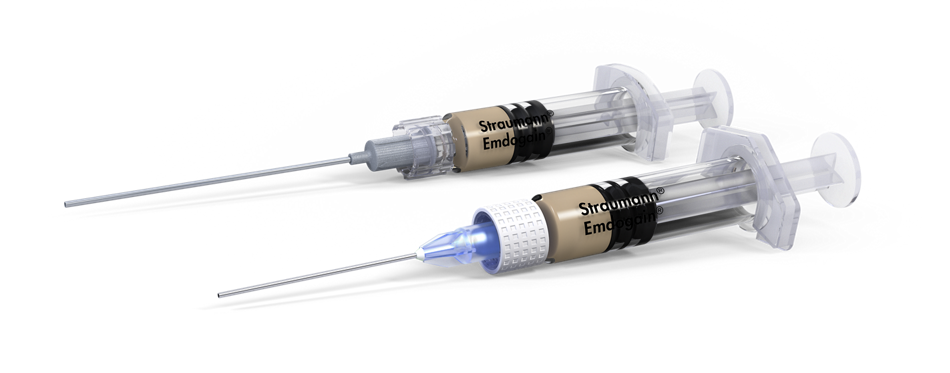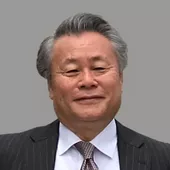Keep pursuing knowledge! – an interview with Prof. Eiji Funakoshi for the 25 years anniversary of Emdogain®
You can’t buy experience – you earn it. In its 25 years of commercial availability, Straumann® Emdogain® has earned the respect of thousands of periodontists, oral surgeons, implantologists and dentists around the world. Yes, in 2020 we celebrate its 25th anniversary from the first clinical use of Emdogain®. Since then, respected leaders in the field of regenerative dentistry have counted on Straumann® Emdogain® to improve the clinical outcome in various treatment indications. Some of them shared with us their experiences and personal consideration about the concepts of expertise and experience in this series of anniversary interviews. Our interview partner of today is Prof. Eiji Funakoshi from Japan.
You have a strong background in periodontology and you are one of the most appreciated professors in Japan. Were you dreaming of becoming a dental specialist in your childhood?
I was not inclined to become a dentist at all in my childhood because no dental professions run in my family. I was planning to go to university and major in civil engineering because my father was a civil engineer and he was working for the government. However, when I was a high school student, a dentist, who is also a distant relative of mine, advised me to become a dentist because dentistry would be a good profession in the future. I strongly believe my decision to pursue a career in dentistry was the right one, especially my eventual career in periodontology.
Are your children following the same dentistry path?
Since I became a periodontist, I have also advised my son and daughter to choose a dental profession just as I was advised. My daughter became a dentist, but my son chose to become a medical doctor. In August of 1980, I founded a private institute, the Funakoshi Research Institute of Clinical Periodontology, for teaching postgraduate courses (both basic and advanced periodontics). In addition, I started teaching post graduate implantology to general dentists. As a result, I have taught over 3000 dentists since 1980. I am really enjoying my dental profession, especially treating patients and teaching both dental students at dental schools and postgraduate dentists at my institute.
What were your first challenges as a student in Kyushu Dental College?
I was interested in periodontics at dental school, but the lectures and preclinical courses of periodontics were so behind compared to other dental subjects at my dental school. So, I eagerly wanted to study advanced periodontics in the USA, but I could not speak English at all. As a result, I organized a student club, which was christened the English Speaking Society, to learn English conversation. Unfortunately, it was very difficult to learn English conversation due to the lack of available English-speaking instructors. I studied English conversation really hard with other dental students under an American missionary woman. During this time, a supervisor in the English-Speaking Society was also a professor of biochemistry at my dental school. He asked me to become his graduate student in biochemistry, even though he knew my main purpose for studying English conversation was for studying periodontics in the USA. I told him, if I could not be accepted at Tufts Dental School of Graduate Periodontics, I would like to be a PhD student in his department. So, I took a graduate entrance examination and passed. I was accepted as a PhD student in biochemistry at Kyushu Dental College. However, I was also accepted as a graduate student in periodontics at Tufts University Dental School of Graduate Periodontics in Boston in 1971. Consequently, I declined my acceptance to PhD studies in biochemistry and prepared to depart Japan for Tufts University Dental School in Boston.
“The most important basic concept is meticulous debridement of the periodontally involved root surface using curettes. In other words, removing endotoxins from periodontally contaminated root surfaces creates an environment biologically acceptable for regeneration.” E. Funakoshi
And how did your academic career start at Tufts University of Boston, USA?
In May of 1971, I arrived in Boston to study Periodontology at Tufts University School of Dental Medicine. I was only the second Japanese postgraduate student at Tufts Graduate Periodontics after World War 2. Chairman Dr. Irvin Glickman was so severe to graduate students at that time. However, he made some exceptions for me because I was the only non-English speaking student. He treated us severely and gave us countless reading assignments from academic journals. We also had to create numerous abstracts from articles. We had didactic courses like all undergraduate students, yet we also had to treat patients every day in the graduate clinic. I studied very hard every day at the library until midnight just to catch up to my classmates. From second year, we started to teach periodontics to undergraduate students in the clinic one day a week. It was a great experience for my present teaching career and dental practice. In May of 1973, I moved to Indiana University Dental School as an assistant professor in the department of periodontics and taught dental students as well as graduate students in conjunction with my enrollment as a part-time graduate student working towards a Master’s Degree. I really enjoyed my academic teaching career, especially teaching graduate students and working on clinical research under Head Professor Dr. Timothy J O’Leary. I was involved in so much clinical research related to graduate student MS theses. In July of 1978, I resigned as Associate Professor at Indiana University Dental School and returned to Japan for good.
What are your past clinical and academic projects that you like to remember?
The concept of trauma from occlusion, which was hypothesized by Professor Dr. Irvin Glickman, has been indispensable. A traumatic occlusal force changes the spread of the inflammation pathway into the periodontal ligament directly and creates vertical or intra-bony defects. I was trained to perform the occlusal adjustment before and after the vertical or intra-bony periodontal defects treatment.
However, when I started to teach at Indiana University Dental School, this concept of trauma from occlusion was denied by Dr. Timothy O’Leary. So, I did not teach any occlusal adjustment during my teaching period (over 5 years). Dr. O’Leary taught me that the most important basic concept is meticulous debridement of the periodontally involved root surface using curettes. In other words, removing endotoxins from periodontally contaminated root surfaces creates an environment biologically acceptable for regeneration. Even today, I maintain the concept of trauma from occlusion and the concept of meticulous debridement of periodontally involved root surface for regeneration.
“Emdogain is a magic treatment because it works to accelerate initial wound healing and has anti-inflammatory effects, such as no post-operative pain or swelling in conjunction with periodontal regeneration.” E. Funakoshi
Can you share with our readers what are you working on currently, when it comes to Straumann® Emdogain®?
I am confident saying that Emdogain is the best biological material for periodontal regenerative therapy. Currently, I use Emdogain for ridge preservation procedure, implant site augmentation and sinus floor elevation mixed with bone graft materials. Moreover, I am using Emdogain for peri-implantitis treatment utilizing bone grafts and collagen membranes. I am getting predictable results with less pain and less swelling in conjunction with accelerated initial healing compared to traditional GBR.
So, you are using Emdogain in a broad range of indications. What is your overall experience with our expertise with our 25 years proficient product?
Before Emdogain was on the market in Japan, I had been using the GTR procedures (336 teeth) with/without bone graft materials for periodontal regeneration for 10 years until 1997. And I had excellent results and I was very satisfied with the GTR, except for slight to moderate adverse reactions, such as post-operative pain, swelling, discomfort and gingival recession. Dr. Tom Willson in Dallas suggested to me that I use Emdogain for periodontal regeneration at the AAP Meeting in Chicago in 1997. In 1998, the Japanese Ministry of Health approved Emdogain as biological regenerative materials. In May 1998, I carried out regenerative surgery on teeth #17 and #16 (intrabony defects) utilizing Emdogain without bone graft material. That was my first biological approach of Emdogain. It was such an easy and simple procedure for me when compared to the GTR. Furthermore, I noticed initial healing was excellent and no swelling and less pain. Emdogain is very user friendly for doctors and very favorable for patients.
What do you think is the secret of Emdogain’s success?
First of all, the effects of Emdogain (Enamel Matrix Derivatives) are well-documented by basic and clinical investigation. Presently, Emdogain is the only available protein product for periodontal regeneration. Emdogain is a magic treatment because it works to accelerate initial wound healing and has anti-inflammatory effects, such as no post-operative pain or swelling in conjunction with periodontal regeneration.
Where do you see the future of Emdogain?
Emdogain has widespread effectiveness for surgical therapies, not only for periodontal regeneration but also for bone regeneration. I strongly believe that Emdogain has regenerative effects for peri-implantitis treatment with collagen membranes and sinus floor augmentation mixing with bone graft materials. This is mostly due to Emdogain's anti-inflammatory effects.
Based on your experience, what is the advice you would give to a young specialist that just starts a career?
Keep pursuing knowledge and using traditional clinical techniques which you learn in your graduate program until you get enough confidence. Then, you can start to modify the technique in your own way.
And what was the best advice that you received when you were in a similar situation?
Any new concept of treatment technique and new materials may last 10~15 years long and then most of them will be replaced by new ones. Please go on with your study.
Clinical case with over 22 years follow-up
Background information: Female patient, 44 years old, non-smoker with no serious medical problems.

Straumann® Emdogain® is a unique gel containing enamel matrix derivative of porcine origin. The main component is amelogenin, which has demonstrated the ability to stimulate certain cells types involved in the healing process of soft and hard tissues towards a regenerative pattern, thus leading to true periodontal regeneration1 and accelerated oral wound healing2. Emdogain® has a respected legacy as an irreplaceable tool for periodontology backed by extensive and long-term clinical documentation including studies with 10 years follow-up3,4. Over the past 25 years it has been used in over 2.5 million patients5 and it is documented in over 1,000 scientific publications, including over 600 clinical papers6 on various indications. For more information: click here.

